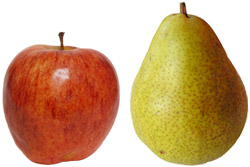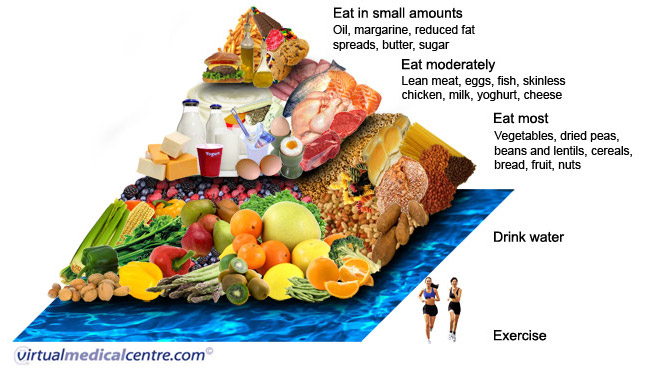The Life Cycle
A life cycle is defined as the cycle of an organism's growth, reproduction and eventual death. The human life cycle refers to humankind's journey from the stages of fertilization until the cycle concludes in their deaths. There are five stages to the human life cycle. The following is an overview of each phase in the cycle.
-
Birth
- The first stage of the human life cycle, referred to as birth, actually begins at conception. When sperm reaches and is able to fertilize a female's egg, the first building block of life is created in the form of a one-cell organism called a zygote. This single cell with divide and multiply itself countless times over the next 40 weeks, until the actual birth occurs. These divisions of cells are what form the various parts of our bodies. Every part of us begins from that one tiny cell.
Infancy
- The second stage in the life cycle is rinfancy. This stage lasts from birth until we are 1 year old. During our first year, we are totally dependent on others to meet our every need. The infancy stage is the most formidable one in the cycle because it's the stage in which we learn the most basic life skills which we will carry with us throughout our life cycle.
Childhood
- The third stage of the life cycle is childhood. This stage begins as we enter into our second year of life and continues for the next 10 years. This is the stage in which we develop the male and female traits that we will carry with us through the rest of our lives. We also develop social skills and personality traits that will define who we are.
Adolesence
- The foruth stage in the cycle of life is adolescence. This stage begins at age 12 and lasts through the 18th year of our lives. During this phase, our bodies develop male and female traits such as menstrual cycles, facial hair and voice changes. The onset of the development of these traits is called puberty.
Adulthood
- The fifth and final stage of the life cycle is adulthood. This stage begins at age 18 and lasts until our death. By this time, barring afflictions such as birth defects and mental retardation, we are fully formed, functional human beings capable of maintaining ourselves and sustaining life. It is during this stage of our lives that we begin the life cycle once again by having children and grandchildren of our own.
-
References
Resources
Our nutritional requirements change as we move through different life stages. Adolescence, pregnancy, lactation, menopause and ageing all place extra demands on the body. These demands need to be met by our daily diet to maintain the best of health.
Food and your life stages
Our nutritional needs change with different life stages. To be fit and healthy, it is important to take
into account the extra demands placed on your body by these changes.
To meet your body’s regular nutritional needs, you should consume:
• A wide variety of nutritious foods
• Water on a daily basis
• Enough kilojoules for energy, with carbohydrates as the preferred source
• Adequate protein for cell maintenance and repair
• Fat-soluble and water-soluble vitamins
• Essential minerals such as iron, calcium and zinc
• Foods containing plant-derived phytochemicals, which may protect against heart disease,
diabetes, some cancers, arthritis and osteoporosis.
A varied diet that concentrates on fruits, vegetables, whole grains, legumes, dairy foods and lean
meats can meet these basic requirements.
Babies – birth to six months of age
Infants usually double their length and triple their weight between birth and one year of age.
Breast milk generally supplies a baby with the required amounts of nutrients, fluids and energy up
to about six months of age. Where possible, breast milk is preferred to formula, as it contains
many protective and immunological factors that benefit the baby’s development.
Breast milk or correctly prepared infant formula provides enough water for a healthy infant to
replace any water losses. However, all infants need extra water once solid foods are introduced.
Babies – six to 12 months of age
Solids should be introduced around six months of age. Different societies have their own traditions
about which food is more appropriate to start with – culturally appropriate foods and preparation
methods should be encouraged when these are nutritionally adequate.
As a baby is gradually weaned from the breast or bottle and new solids are introduced, there may
be reduced body stores of iron. To maintain nutrient body stores:
• Give your baby foods that are rich in iron, such as iron-enriched infant cereals. Ironenriched
rice-based cereals are frequently recommended as the first food to be introduced,
as there is the additional benefit of a lower risk of an allergic reaction.
• Fruits and vegetables should be introduced after the cereals. They are important for
vitamin and mineral content and to introduce new textures, tastes and colours.
• Meat, poultry, fish and whole eggs are generally introduced last.
• Don’t add salt or sugar to your baby’s food, it is unnecessary.
• Avoid cow’s milk as the main drink in the first 12 months.
• Introduce foods one at a time. Offer new foods once every three to four days to avoid
confusion and to rule out food allergy and sensitivity.
• Feed babies during illness and feed up after illness. Give ample liquids if your baby has
diarrhoea.
• Occasional exposure of the skin to sunlight is usually enough to provide a baby’s vitamin D
requirements but this does vary from season to season and with skin colour.
Young children
Once a child is eating solids, offer a wide range of foods to ensure adequate nutrition. Young
children are often picky with food but should be encouraged to eat from a wide variety of foods.
Food and your life stages Page 1 of 4
During childhood, children tend to vary their food intake (spontaneously) to match their growth
patterns. Children’s food needs vary widely, depending on their growth and their level of physical
activity. Like energy needs, a child’s needs for protein, vitamins and minerals increase with age.
Ideally, children should be accumulating stores of nutrients in preparation for the rapid growth
spurt experienced during adolescence.
Food-related problems for young children include overweight, obesity, tooth decay and food
sensitivities.
Recommendations include:
• If a child is gaining inappropriate weight for growth, limit energy-dense, nutrient-poor
snack foods. Increase your child’s physical activity. You could also limit the amount of
television watching.
• Tooth decay can be prevented with regular brushing and visits to the dentist. Avoid sugary
foods, especially if sticky or acidic.
• Ensure your child has enough fluids, especially water.
• Be aware of foods most likely to cause allergic reactions, including peanuts, shellfish and
cow’s milk. Be particularly careful if there is a family history of food allergy.
Children entering their teenage years
The growth spurt as children move into adolescence needs plenty of kilojoules and nutrients. For
girls, this generally occurs around 10 to 11 years of age. For boys it occurs later, at around 12 to
13 years.
• Recommendations include:
• The extra energy required for growth and physical activity needs to be obtained from foods
that also provide nutrients instead of just ‘empty calories’.
• Takeaway and fast foods need to be balanced with nutrient-dense foods such as wholegrain
breads and cereals, fruits, legumes, nuts, vegetables, fish and lean meats.
• Dairy products should be included to boost calcium intake – this is especially important for
growing bones.
Older teenagers and young adults
Moving away from home, starting work or study, and the changing lifestyle that accompanies the
late teens and early 20s can cause dietary changes that are not always conducive to good health.
Recommendations include:
• Make a deliberate effort to keep physically active.
• Limit alcohol intake.
• Reduce the amount of fats and salt in the daily diet.
• Be careful to include foods rich in iron and calcium.
• Establish healthy eating habits that will be carried on into later life.
Pregnant women
A pregnant woman should concentrate on increasing her nutrient intake, rather than her kilojoule
intake, particularly in the first and second trimesters. In Australia, pregnant women are expected
to gain about 10–13kg during pregnancy. However, this depends on the pre-pregnancy weight of
the mother.
Recommendations include:
• Not ‘crash dieting’, as this can have a negative impact on the baby.
• Not ‘eating for two’, as this will lead to unnecessary weight gain. A healthy pregnancy only requires about an extra 850–1,100 kilojoules a day during the second and third trimester, which is equivalent to a glass of milk or a sandwich.
• Concentrate on diet quality rather than quantity.
• Accommodate cravings, but don’t let them replace more nutritious foods.
• Nutrients for which there are increased requirements during pregnancy include folate, iron
and iodine. Iron supplements are often advised, but don’t take them unless your doctor
recommends them. Folate is important three months before and in the first trimester of
pregnancy to avoid neural tube defects (like spina bifida) in the baby. All women of
childbearing age should eat high folate foods or take a folate supplement (remember to
talk to your doctor first).
• The recommended intake of calcium does not specifically increase during pregnancy. It is however, very important that pregnant women do meet calcium requirements during pregnancy.
• No one knows the safe limit of alcohol consumption during pregnancy, recommendations are to not drink at all.
• Being physically active has many benefits. If you are active and fit and are experiencing a normal pregnancy, you can remain physically active during your pregnancy. Otherwise, consult your doctor for advice.
• Drink plenty of fluids.
• Do not smoke – both direct and passive smoking are associated with growth retardation,
increased risk of spontaneous abortion, stillbirths, placental complications and low birth
weight.
Breastfeeding mothers
Breastfeeding mothers need a significant amount of extra energy to cope with the demands of breastfeeding. This extra energy should come in the form of nutrient-dense foods to assist in meeting the extra nutrient requirements that also occur when breastfeeding.
Recommendations include:
• Eat enough food – breastfeeding burns through extra kilojoules.
• Eat foods that are nutrient dense – especially those foods that are rich in folate, iodine, zinc and calcium.
• Eat and drink regularly – breastfeeding may increase the risk of dehydration and cause
constipation.
Menopausal women
Thinning of the bones is common in postmenopausal women because of hormone-related changes.
Recommendations include:
• Eat foods rich in calcium – such as milk or, if necessary, take calcium supplements as prescribed by a doctor.
• Weight-bearing exercises – such as walking or weight training can strengthen bones and help maintain a healthy body weight.
• A high fibre, low fat and low salt diet – a diet high in phytoestrogens has been found to reduce many symptoms of menopause, such as hot flushes. Good food sources include soy products (tofu, soymilk), chickpeas, flax seeds, lentils, cracked wheat and barley.
• A variety of wholegrain, nutrient-dense food – whole grains, legumes and soy-based foods (such as tofu, soy and linseed cereals), fruits and vegetables, and low fat dairy products.
Older people
Many people eat less as they get older – this can make it harder to make sure your diet has enough variety to include all the nutrition you need.
Recommendations include:
• Be as active as possible to encourage your appetite and maintain muscle mass.
• Remain healthy with well-balanced eating and regular exercise.
• Eat foods that are nutrient dense rather than energy dense including eggs, lean meats, fish, liver, low fat dairy foods, nuts and seeds, legumes, fruit and vegetables, wholegrain breads and cereals.
• If possible, try to spend some time outside each day to boost your vitamin D synthesis for healthy bones.
• Limit foods that are high in energy and low in nutrients such as cakes, sweet biscuits and soft drinks.
• Choose foods that are naturally high in fibre to encourage bowel health.
• Limit the use of table salt, especially during cooking.
• Choose from a wide variety of foods and drink adequate fluids.
• Share mealtimes with family and friends.
.
Diet can play a central role in the control and prevention of some medical conditions such as Overweight, Diabetes and Cardiovascular Diseases.
Follow the links below to find nutritional information to help in preventing or living with such illnesses.




 A person's waist circumference is a better predictor of health risk than BMI. Having fat around the abdomen or a 'pot belly', regardless of your body size, means you are more likely to develop certain obesity-related health conditions. Fat predominantly deposited around the hips and buttocks doesn't appear to have the same risk. Men, in particular, often deposit weight in the waist region.
A person's waist circumference is a better predictor of health risk than BMI. Having fat around the abdomen or a 'pot belly', regardless of your body size, means you are more likely to develop certain obesity-related health conditions. Fat predominantly deposited around the hips and buttocks doesn't appear to have the same risk. Men, in particular, often deposit weight in the waist region. 
 Most of the fats we consume occur in foods as
Most of the fats we consume occur in foods as 



